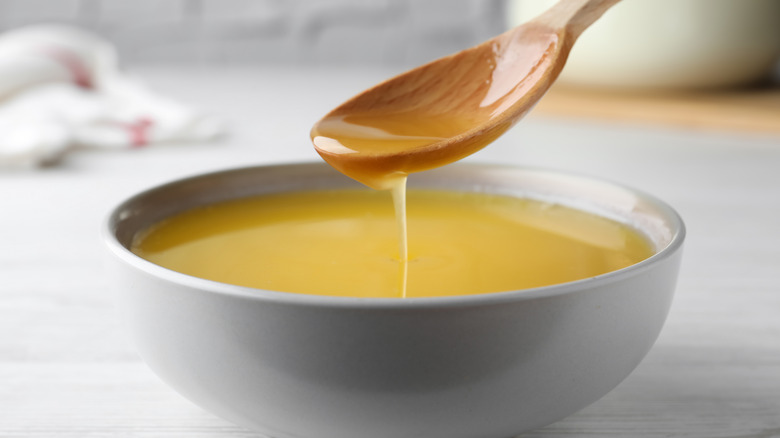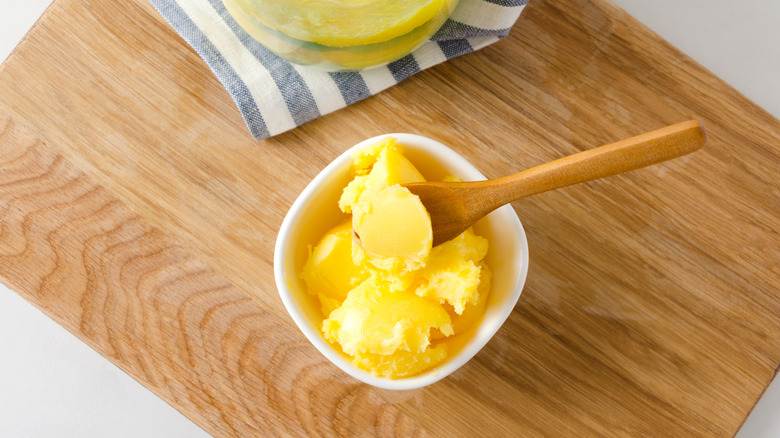The Clever Technique For Making DIY Clarified Butter
Viewers went wild when Poppy O'Toole, TikTok star and Michelin-trained chef known for her 15-hour potato, shared her method for clarifying butter in a microwave. "A lot of you were shocked with how I clarified my butter and how easy my method is," O'Toole explained in the video. Compared to the traditional method, which involves standing over a hot stove and carefully skimming milk solids from near-boiling butter, her method is simple. But why go to the trouble in the first place?
Butter has a low smoke point, meaning that it burns over high heat. That's because of its makeup: butter is a combination of water, milk solids, and fat. Milk solids burn before fat, so removing them through the clarification process raises the smoke point. While butter will start to sizzle and smoke at just 350 degrees Fahrenheit, clarified butter can withstand temperatures of up to 465 degrees. Use it in high-heat recipes, and you'll get a delicious, buttery flavor that you wouldn't be able to achieve otherwise.
While the microwave method was news to many of O'Toole's viewers, it's not new. Recipes for microwaved clarified butter have been floating around the internet for a while; Ina Garten used the method on her show a few years back. While she used clarified butter for lemony fig pancakes, you can also use it to roast vegetables, sauté fish, poach eggs, or stabilize sauces. It even pairs well with popcorn.
How to make it?
To make clarified butter, O'Toole chopped her butter into large chunks, put it in a microwave-safe dish, and melted it. "Do not mix it, do not stir it, make sure it's fully melted," she reminded viewers. While the exact amount of time needed will vary depending on your microwave and the amount of butter you use, ensure that the milk fats have separated before you remove it. You'll know that it's separated when the frothy white milk fats have risen to the top. Put the melted butter in the refrigerator until it's solid, then poke a hole in the corner with a knife and drain the buttermilk out. The hardened slab left on the top is clarified butter. Pop it out of the container and scrape off any leftover milk solids, and it'll be ready to use.
While O'Toole's method is a helpful hack for many recipes, keep in mind that it's no substitute for ghee. Yes, ghee is clarified butter, but it's a specific kind that cooks the butter in a pan until the milk solids have browned, giving it a richer, nuttier flavor. But a no-fuss clarified butter, where you just want the creamy fat, pop it in the microwave and keep a close eye.

